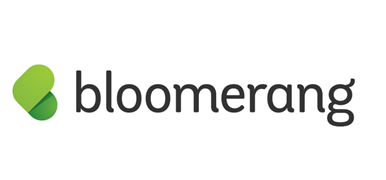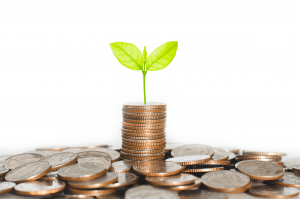Steven Shattuck is Chief Engagement Officer at Bloomerang. A prolific writer and speaker, he curates Bloomerang’s sector-leading educational content and hosts their weekly webinar series. Steven has contributed content to the National Council of Nonprofits, AFP, NTEN and Nonprofit Hub, and is a frequent conference speaker. He’s also a co-author of Fundraising Principles and Practice: Second Edition.
The year-end giving season doesn’t quite end when the ball drops on New Year’s Eve. For retention-minded fundraisers with a strong donor cultivation plan in place, the early days of a new calendar year might even be busier than any day in November and December.
Here are five tips for thanking your year-end donors that will increase the likelihood of them being retained in the following year:
1. Know who your year-end donors are
“Year-end” isn’t a completely useful description for a donor segment; it’s not nearly homogenous enough. Your year-end donors gave at different amounts, for different reasons, and through different channels. They may have made their first gift or their 20th.
Using your donor management software to create sub-segments within your year-end donor segment will allow you to craft messaging that is much more likely to resonate with each recipient, increasing your chances of receiving gifts from them in the future.
Examples of sub-segments include:
- Frequency:
- First gift
- Second gift
- New monthly donor
- Existing monthly donor
- Made multiple one-time gifts in the previous year
- Channel:
- Direct mail
- Your website
- Peer-to-peer
- Event
- Campaign:
- Thanksgiving
- Giving Tuesday
- Hanukkah
- Christmas
- Year-End
- Gift Amount:
- Was it an upgrade or a downgrade?
- Was it above or below your average gift size?
- Reason for Giving:
- What do they care about?
- Why are they passionate about your cause?
- Specific fund designation
Once you know who you’re communicating to, you can begin to prevent specific messaging for each sub-segment. These communications will perform much better than a one-size-fits-all year-end acknowledgement.
2. Set a deadline for yourself
All donors who give from 11/1 to 12/31 (or whatever timeframe you consider to be “year-end” should be thanked within a certain amount of time (this does not include any automated messaging, like donation form confirmation emails).
Ideally, you would be thanking year-end gifts as they come in, as quickly as you can, rather than waiting until January or later.
But not to worry if that wasn’t the case; you still have time! But that window is quickly closing; not only because the year-end season is in the rear-view mirror, but also because you’ll want to get on with new fundraising campaigns soon.
Giving yourself an “end of January” deadline to thank all of your year-end donors is a good way to hold yourself accountable and turn the page (or perhaps shut the whole book) on Q4 activities.
3. Acknowledge any previous giving from the year (prior to the year-end gift you are acknowledging) in any thank-you messaging
This is where your new sub-segments will really come in handy. In cases where this year-end gift was not their only gift during the calendar year, be sure to mention any past giving. You don’t have to be super specific; a line like “Thank you so much for your year-end gift and all of your support throughout the year” covers giving, volunteerism, advocacy, etc.
Be sure to watch out for monthly donors making a “13th” extra year-end gift; this is a major engagement signal that should not be ignored. After all, they were already giving on a set schedule, and chose to make an additional gift. Your monthly donors will be impressed by the observation and won’t forget it.
4. Acknowledge Giving Tuesday gifts as Giving Tuesday gifts
Giving Tuesday isn’t the only time you should do this (“Thank you for giving on Giving Tuesday.”) but it might be the most important.
Because of the massive participation on behalf of nonprofits on Giving Tuesday (donors have a lot of choices!), and the fact that it was likely a significant aspect of your overall year-end campaign, singling out Giving Tuesday gifts as Giving Tuesday gifts shows the donor you’re paying attention, and gives you the opening to acknowledge additional year-end gifts separately.
If your Giving Tuesday campaign was raising money for a specific fund or project, this also gives you the opportunity to update the donor on any progress made or goals reached.
5. Thank first-time donors personally
With first-time donor retention rates hovering around 20%, securing a second gift from new donors may be more important than securing a first gift. Study after study shows that personal outreach is most effective when acknowledging first-time donors. Bloomerang research found phone calls to be particularly effective.
Personal emails, video messages, and welcome kits are also great options. The goal in any of these communications is to welcome the donors to your community of supporters, preview future communications, and further inform them about your mission offerings.
Don’t be afraid to also show some curiosity about them, particularly why they donated, how they found out about you, and what types of communications they’d like to receive. A first-time donor survey can glean useful information, while also demonstrating to the donor that you care about their philanthropic goals.
No matter how and when you decide to thank your year-end donors, be sure to include stories of impact, goal attainment information, and a preview of what’s to come in the new year. If you do a good job of stewarding these donors, you might be surprised how quickly they renew their support!
Final Thoughts
Now that we’ve covered strategies for acknowledging the year-end gifts your nonprofit receives, here are some great resources your nonprofit can use to help you succeed with retaining donors all throughout the year!
- Donor Retention: The Essential Guide for Fundraising
- What’s The Impact of Improving 1st-Time Donor Retention?
- Get the eBook: Retaining Your P2Peeps
About Bloomerang
We value relationships and are proud to connect nonprofits to our partner network and hope this helps increase your nonprofit’s effectiveness and success. We proudly partner with Bloomerang, who helps nonprofit organizations reach, engage, and retain the advocates they depend on to achieve their vision for a better world through their cloud-based donor management application.









